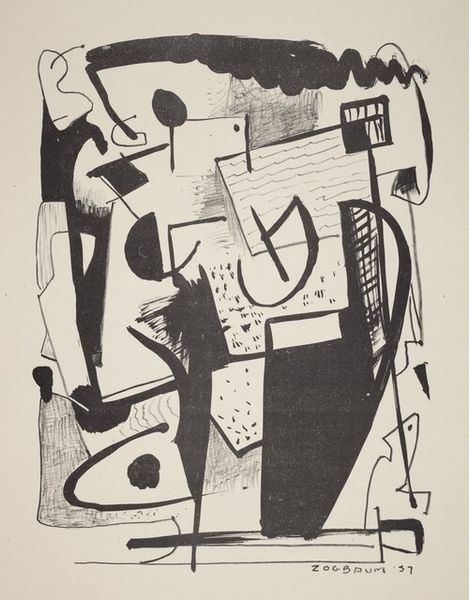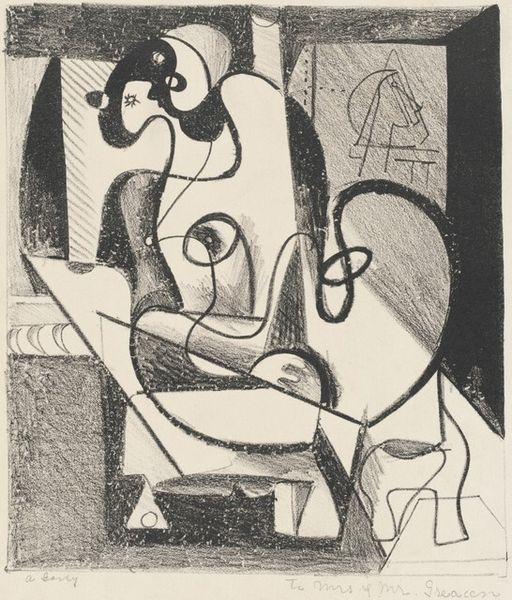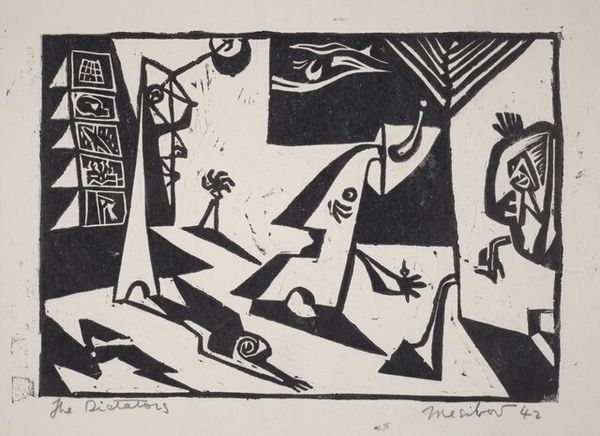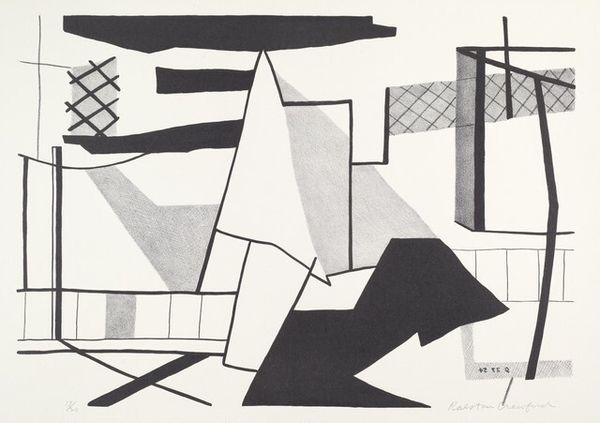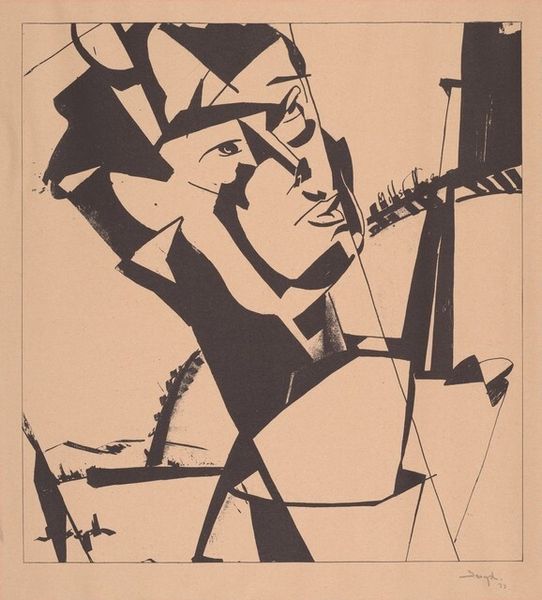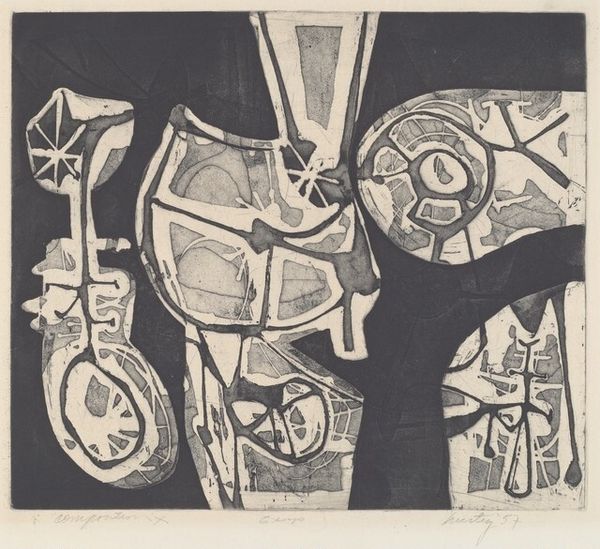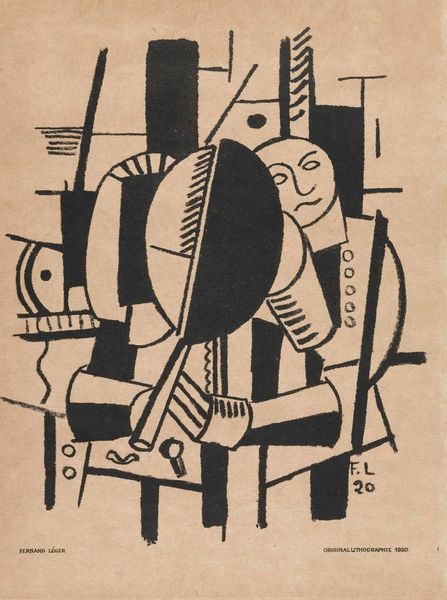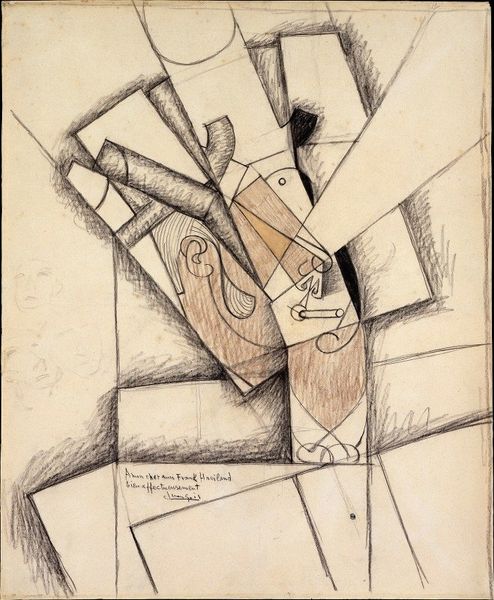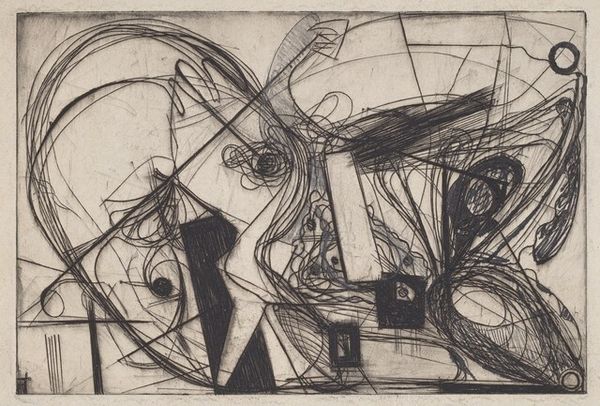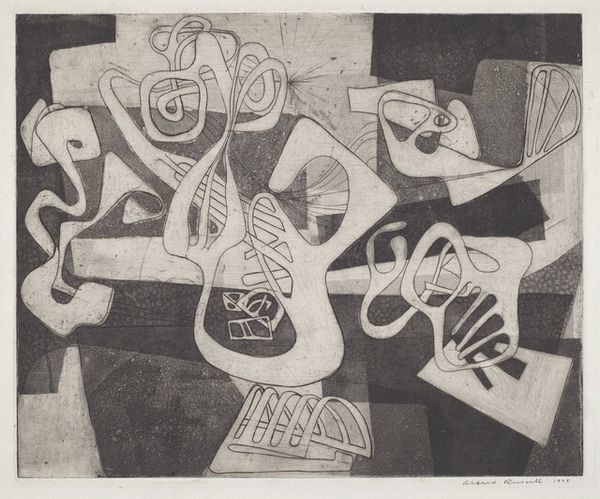
drawing, ink
#
drawing
#
cubism
#
ink
#
geometric
#
abstraction
#
line
#
modernism
Dimensions: sheet: 21.3 x 29.8 cm (8 3/8 x 11 3/4 in.)
Copyright: National Gallery of Art: CC0 1.0
Curator: Welcome. We’re looking at Arshile Gorky’s “Composition,” created around 1931. It’s an ink drawing, full of angular forms and dense cross-hatching. What strikes you first about it? Editor: The immediate impression is one of energetic fragmentation. The stark black ink against the light paper creates a powerful contrast, and the geometric shapes, though abstract, suggest a hidden order striving to emerge. It feels like a dynamic puzzle. Curator: Gorky, deeply involved with the artistic circles of his time, shows a clear engagement with Cubism here. You see how he fractures the visual plane. This breaks down traditional modes of representation to investigate pictorial structure. What social factors might have fueled Gorky's move to such abstraction in the early 30's? Editor: One can see, in the intense line work, the artist exploring tensions that mirror the broader socioeconomic landscape of the 1930s. The Depression, along with increasing industrialization created an uncertain, unstable world. He almost renders his internal psychological struggle into abstracted lines. Curator: True, the cross-hatching does construct depth within his compositions, as his exploration of Cubist vocabulary continues. What can be found within his choice to represent these geometric forms so plainly? What effect is the formal presence creating on its viewers? Editor: The contrast evokes a tension, and an almost unsettling instability. He uses line quality—the varying weights and densities— to imply a sense of depth, and how form interlocks. Despite its abstract nature, "Composition" reveals how deeply felt Gorky's connection to abstraction actually was. Curator: Gorky was attempting to build meaning for his viewers during that time of instability. This era pushed artists to explore radical ways of connecting the internal state to the external forces of the world around them. Thank you for that rich visual exploration. Editor: A worthwhile endeavor; it allows for reflection on the complex relationship between creation, perception, and historical context.
Comments
No comments
Be the first to comment and join the conversation on the ultimate creative platform.
